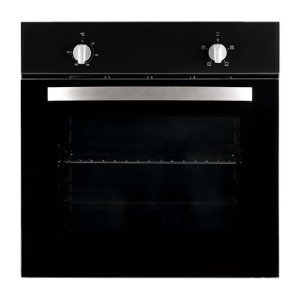HallockJacqueline
HallockJacqueline发表的博客
The Rise of Single Built-In Ovens: A Comprehensive Guide
In today's contemporary cooking areas, the choice of home appliances plays a pivotal function in integrating performance with visual appeal. Among these appliances, the single built-in oven has become a preferred amongst property owners and chefs alike. This short article delves into the functions, advantages, and considerations related to single built-in ovens while attending to regularly asked concerns (FAQs).

Comprehending Single Built-In Ovens
Single built-in ovens are designed to fit seamlessly within kitchen cabinets. Unlike freestanding ovens, which stand alone and might inhabit more space, built-in ovens are installed directly into the kitchen infrastructure, offering a streamlined, integrated look. They can run individually or in combination with a cooktop, maximizing the effectiveness and styles of modern kitchen areas.
Functions of Single Built-In Ovens
Single built-in ovens come equipped with a range of ingenious functions that boost their performance and user experience. Some common features consist of:
| Feature | Description |
|---|---|
| Self-Cleaning | A function that cleans up the oven interior at high temperature levels, reducing the requirement for manual scrubbing. |
| Convection Cooking | A fan circulates hot air, making sure even cooking and browning of food. |
| Smart Technology | Wi-Fi connection that allows control over the oven from smart devices, together with dish guidance and tracking. |
| Multiple Cooking Modes | Alternatives such as baking, broiling, roasting, and barbecuing to match different cooking requirements. |
| Touch Controls | Instinctive touch interfaces that permit easy temperature and timer changes. |
| Streamlined Design | Visual surfaces like stainless-steel, black, and custom-made panel-ready options for a tailored kitchen look. |
Benefits of Single Built-In Ovens
- Space-Saving Design: Built-in ovens inhabit less floor area, making them ideal for compact cooking areas or for house owners desiring to optimize kitchen layouts.
- Improved Aesthetics: Their integrated design adds to a streamlined look, enabling a more unified appearance with kitchen cabinetry.
- Enhanced Functionality: With innovative functions like precise temperature controls and multiple cooking modes, built-in ovens supply flexibility for different culinary jobs.
- Increased Value: Homes geared up with contemporary, high-quality devices like built-in ovens tend to have greater market price.
- Modification: Built-in ovens offer customizable options, permitting homeowners to choose designs that match their kitchen style completely.
Factors to consider When Choosing a Single Built-In Oven
When choosing a single built-in oven, a number of aspects should be taken into consideration to guarantee that it meets culinary requirements and fits the kitchen style. Below are essential factors to consider:
Size and Capacity:
- Standard dimensions typically range from 24 inches to 30 inches broad.
- Think about the internal capacity, measured in cubic feet, depending on the cooking needs of the family.
Fuel Type:
- Built-in ovens can use gas, electric, or dual-fuel options.
- Electric ovens are known for consistency, while gas ovens use quicker heat modifications.
Installation:
- Proper installation is vital for safety and functionality. Professional setup is suggested, particularly for gas ovens.
Spending plan:
- Prices can differ widely based on brand name, features, and additional innovation. Figure out a budget before shopping.
Energy Efficiency:
- Look for ovens with energy scores to ensure reduced electricity usage in time.
Brand name and Warranty:
- Choose reputable brand names known for resilience and customer care. Likewise, think about warranty choices.
FAQ About Single Built-In Ovens
1. How does a single built-in oven differ from a double built-in oven?A single built-in
oven has one cooking compartment, while a double built-in oven features 2 different compartments, permitting simultaneous cooking at various temperatures. 2. Can built-in ovens be placed under the countertop?Typically, built-in ovens are developed to fit within kitchen cabinetry
. However, it is important to guarantee proper ventilation and adherence to setup guidelines for security. 3. How do I clean up a self-cleaning single built-in oven?To activate a self-cleaning cycle, remove
racks and other items, then select the cleansing function according to the
manufacturer's guidelines. After the cycle, enable the oven to cool previously wiping away ash residue. 4. Is it worth investing in a smart single built-in oven?Smart ovens supply flexibility, convenience, and integration with other clever home devices.
They can be particularly advantageous for tech-savvy users who delight in
accuracy cooking and remote tracking. 5. What should I do if my built-in oven is not heating up properly?If the oven fails to heat, check for power issues, ensure the settings are right, and confirm that the heating component is functioning.
If problems continue, seek advice from a professional technician. Single built-in ovens represent a mix of performance, style, and technological development in modern kitchen styles. Whether in a compact area or a sprawling premium kitchen, these ovens supply property owners with the
tools needed to explore their culinary imagination while preserving an arranged and advanced visual. As customers continue to purchase their homes, understanding the ins and outs of built-in ovens can cause informed decisions that boost both cooking experiences and home value. As technology progresses, the future of single built-in ovens assures a lot more exciting developments for cooking lovers.
